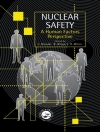Economic Revitalization is unique in that it discusses leading revitalization strategies in the context of both city and suburban settings, offering case studies of program development and implementation.
In Economic Revitalization: Cases and Strategies for City and Suburb Fitzgerald and Leigh answer the need for a text that incorporates social justice and sustainability into how we think about and practice economic development. It is one of the first to talk about how revitalization strategies are implemented in both cities and suburbs, particularly inner-ring suburbs that are experiencing decline previously associated only with inner-city neighborhoods. After setting the context with a brief history of economic development practice and its shortcomings, Fitzgerald and Leigh focus on six economic development strategies: sectoral strategies, Brownfield redevelopment, industrial retention, commercial revitalization, industrial and office property reuse, and workforce development. Each of these chapters begins with an overview of the strategy and then presents cases of how it is being implemented. The cases draw from Atlanta, Chicago and its suburbs, Emeryville, Kalamazoo, Louisville, New Haven, Portland, Sandy Springs, and Seattle (and suburban King County). They illustrate the tradeoffs often made in achieving one goal at the expense of another. Although they admit that some of the cases come up short in illustrating a more equitable and sustainable economic development practice, Fitzgerald and Leigh conclude with an optimistic view that the field is changing.
The book is aimed at students and practitioners of economic development planning who seek to foster stronger economies and greater opportunity in inner cites and older suburbs. It is also meant to assist planners in thriving new towns and suburban communities seeking to avoid future economic decline as their communities mature.
Economic Revitalization:
- Discusses practice in both suburban and inner-city settings
- Integrates the planning values of social justice and sustainability into the discussion of implementation strategies
- Includes cases that reveal the political nature of the planning process and the types of tradeoffs that often must be made
- Provides insights for planners seeking to adopt ‘best practice’ programs from other localities
Tabella dei contenuti
Introduction
1. Redefining the Field of Local Economic Development
2. Sectoral Development Strategies for New and Old Industries
3. Brownfield Redevelopment for Equitable Community Revitalization
4. Industrial Retention
5. Commercial Revitalization in Central Cities and Older Suburbs
6. The Reuse of Office and Industrial Property for Sustainable Urban Development
7. Job Centered Economic Development
8. Conclusion
Bibliography
About the Authors
Circa l’autore
Nancey Green Leigh is a Professor and Ph D Program Director in the School of City and Regional Planning Program at the Georgia Institute of Technology. She is a Fellow of the American lnstitute of Certified Planners and Co-Editor of the Journal of Planning Education and Research. Leigh teaches, conducts research, and publishes in the areas of local economic development planning, urban and regional development, brownfield redevelopment, and sustainable urban industrial systems.She is the author of Stemming Middle Class Decline: The Challenge to Economic Development Planning, and coauthor (with Joan Fitzgerald) of Economic Revitalization: Cases and Strategies for City and Suburb. Some of the journals she has published in are Economic Development Quarterly, Journal of Planning Education and Research, Journal of the American Planning Association, Journal of Industrial Ecology, International Regional Science Review, Journal of Resource Conservation and Recycling, Growth and Change, Journal of Urban Technology, IEDC Economic Development Journal, and the Journal of Planning Literature. She obtained her B.A. in urban studies and a master′s in regional planning from the University of North Carolina at Chapel Hill, and a master′s in economics and a Ph.D. in city and regional planning from the University of California at Berkeley. She is a former Woodrow Wilson Fellow and Regents Fellow of the University of California at Berkeley and past Vice President of the Association of The Collegiate Schools of Planning.












